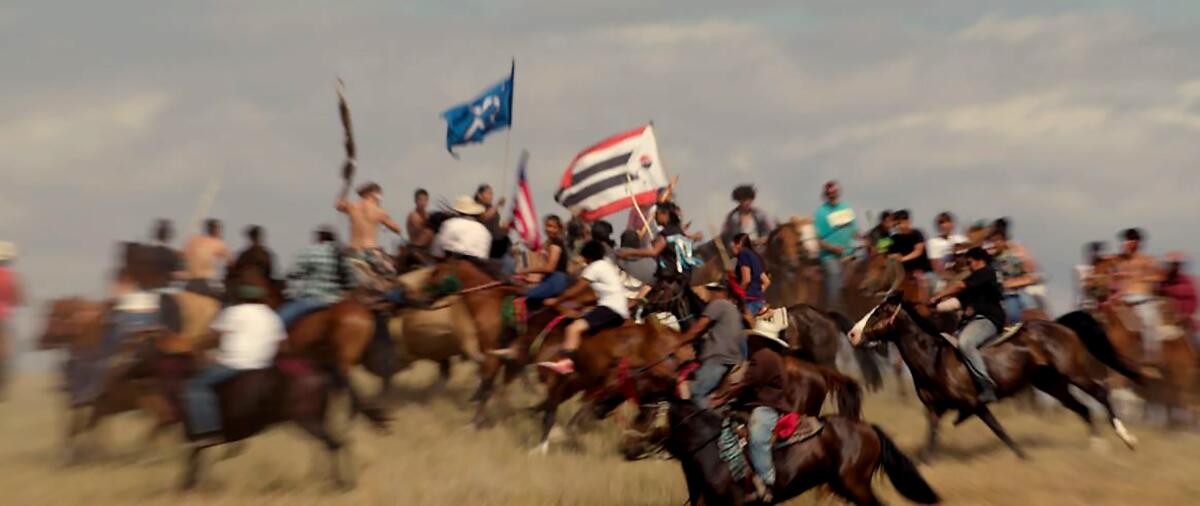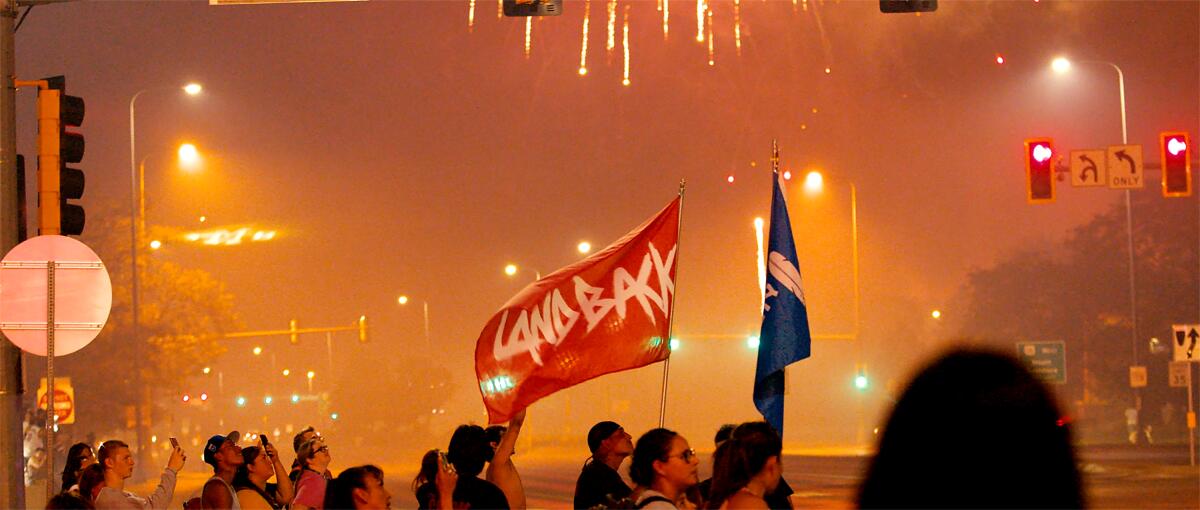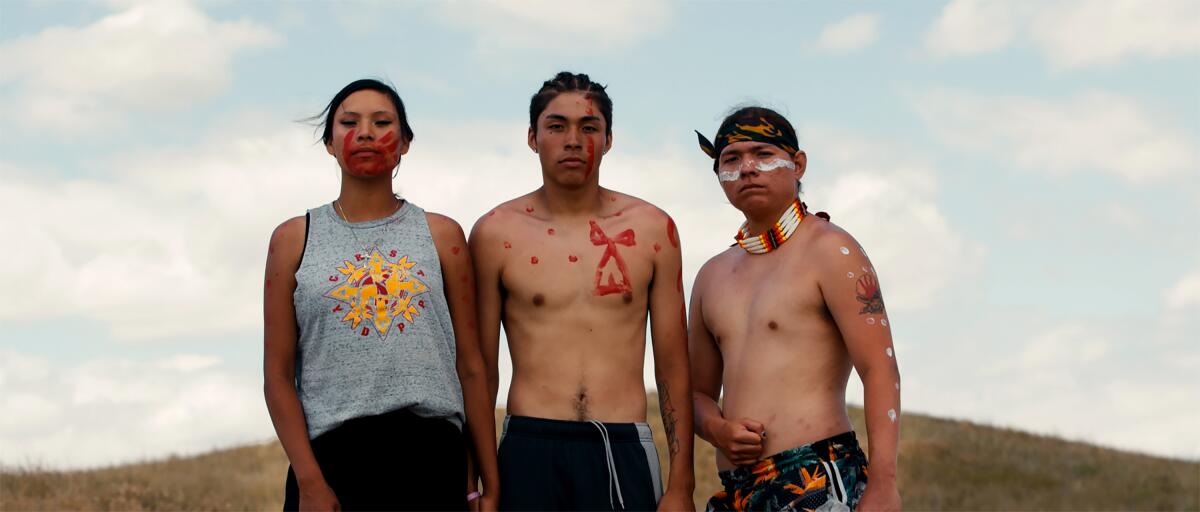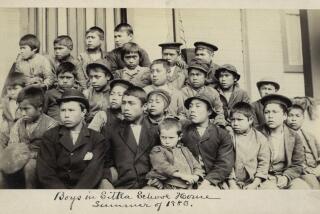Review: ‘Lakota Nation vs. United States’ sets the record straight on decades of land theft

- Share via
Despite decades of colonial violence, extractive greed and invasive Mt. Rushmore tourism, South Dakota’s wondrous Black Hills are fixed in the hearts and minds of those they were taken from, the Očéti Šakówiŋ, a First Peoples alliance of the Lakota, Nakota and Dakota tribes.
Everyone agrees on the place’s stunning beauty and bounty. But the fight for who belongs on these millions of acres — the descendants of its original stewards, for whom the Black Hills are sacred, or the government-backed settlers who’ve exploited the land — is a drawn-out story rarely contextualized effectively. That corrective history is now front and center in Jesse Short Bull’s and Laura Tomaselli’s documentary “Lakota Nation vs. United States,” a lyrical, edifying and blistering plea for Indigenous justice.
Toggling between interviews, archival footage and graceful imagery of the region (underscored by evocative narration from award-winning poet Layli Long Soldier), the film charts a generational conflict that has shown the United States to be an untrustable partner, beginning with the Fort Laramie treaty of 1851.

America’s routine encroachments in the years that followed — to mine gold, to expand property ownership or just to wipe out a perceived threat to Manifest Destiny — were only the physical violations. Just as pernicious were the spiritual and cultural erasures: the sadistic boarding schools designed to force Christian assimilation, and the racist Hollywood stereotyping in cartoons, movies and television (snippets of which the filmmakers thread in for appropriately queasy emphasis).
George Armstrong Custer’s homicidal craziness, meanwhile, gets white-washed into a tragedy, while the carving of Mt. Rushmore, which required the spoiling of a treasured mountain known as Six Grandfathers, is rightly viewed as a shrine to white supremacy. The goal, journalist Nick Estes notes in the film, was to make the Indigenous a “phase” in American history.
The battle hasn’t always felt insurmountable, thanks to persistent legal challenges and the birth of the Red Power movement during the civil rights era. Even a 1980 Supreme Court decision in favor of the Great Sioux Nation laid bare the unconstitutional misdealings, and recognized the theft of the Black Hills from the Očéti Šakówiŋ.

But the tribes have never accepted the awarded money, now totaling $2 billion. To them, the land can’t be bought, only returned. The modern campaign to restore Black Hills sovereignty for the tribes, as seen on the cap of interviewee Nick Tilsen, an activist, is called “Land Back.” Not to own, but to keep and respect.
Milo Yellow Hair, one of the film’s more eloquent elders, calls the Black Hills their “cradle of civilization.” That concept is bolstered by the interstitial photography of the landscape, woven in like a visual commentary throughout. Somehow avoiding the nature-film trap of being blandly picturesque, these images convey a sublime transcendence that binds us more deeply to a story of identity.
The timeline has always been grim. But this tableau of past wrongs and wretched consequences nonetheless feeds into what’s celebratory about our current progressive moment: a re-energized debate about stolen land and inequity, spurred by young people invigorated by the history they were never taught, and gaining traction with non-Natives to boot. Their inspiring actions against pipelines (another 1868 treaty violation) and further environmental harm give “Lakota Nation vs. United States” a well-earned third-act uplift. There’s no way to know what will happen with the Black Hills, but we get the idea that not only is the fight far from over, the legacy of resistance is in good hands.
'Lakota Nation vs. United States'
Rating: PG-13, for some strong language, violent images and thematic elements
Running time: 1 hour, 58 minutes
Playing: Starts July 21 at Laemmle Royal, West Los Angeles
More to Read
Only good movies
Get the Indie Focus newsletter, Mark Olsen's weekly guide to the world of cinema.
You may occasionally receive promotional content from the Los Angeles Times.










